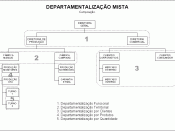In order for you to fully understand the conflict management styles used in my organization I must first explain to you what conflict means to me. Conflict occurs whenever disagreements exist in a social situation over issues of substance or whenever emotional antagonisms create frictions between individuals or groups. Managers and team leaders can spend considerable time dealing with conflict.
Conflict will occur in any long-term relationship. Conflict happens in personal professional, family, and social relationships. Expect it. Frequently, conflict damages and destroys relationships. Sometimes the damage is irreparable. Conflict does not have to be destructive. It can also be a stimulus for change, for improvement, and for creativity.
Most organizations don't handle internal conflict very well. My organization uses three basic approaches to handle conflict in the workplace. Sadly, the two most common approaches do not work. Let's examine the three approaches used in my organization:
1. Avoiding conflict. This approach is based upon the belief that conflict is bad or that it is a sign of a dysfunctional group. Organizations that use this approach may try to create structures to prevent conflict. Avoidance is often a sign of denial that conflict exists.
Nonaction is a prime strategy for conflict evaders. In the worst case, the evaders do not even recognize the symptoms that conflicts are occurring. Consequently, conflicts smolder and fester until they erupt or explode.
Avoiding conflict does not work. Few people's problems go on their own. You resolve most interpersonal problems only by consciously addressing them. The more serious the problem, the less likely it will go away without conscious intervention.
2. Authoritative command. This approach is based upon the belief that you can smother or eliminate conflict. A common suppression strategy is to lay down the law, to set strict limits, to require...



Nice
your paper has been great help and full of information.
1 out of 1 people found this comment useful.